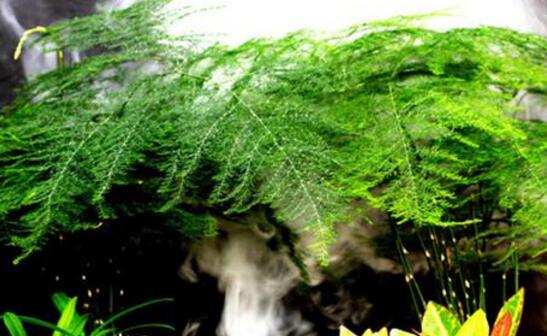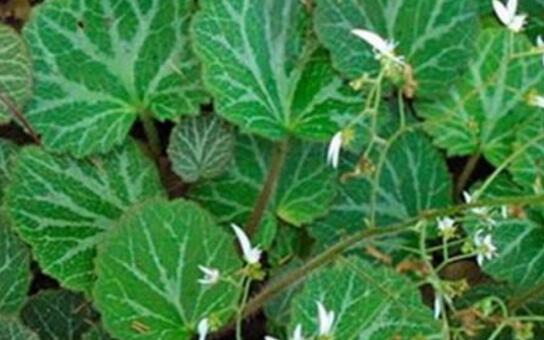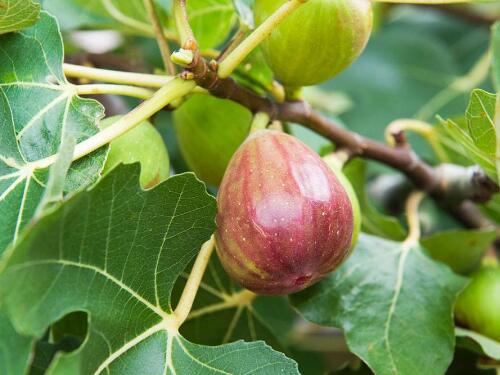What to do when asparagus grows insects? disease and pest control of asparagus / not paying attention to fear of death of the whole plant
Asparagus insect or disease is a very troublesome thing, it will not only make the leaves yellow, but also may lead to the death of asparagus, so we must pay enough attention to it, so what should we do if it grows? Today, we will introduce several common pest control methods of asparagus.
What if asparagus grows worms?

The pests that may appear on asparagus are mainly red spiders, shell insects and aphids. What if asparagus grows? It is certain to get rid of these pests, but different pests will have different characteristics, so it is necessary to take correct pest control methods of asparagus.
1. Red spider
Symptoms: the phenomenon of silking and netting appears on the back of the leaf, and the color of the leaf is abnormal, such as yellowing, etc., pay attention to observe the leaf, if more leaves occur, it should be dealt with in time.
Treatment method: ① in 400ml water, propargite or dimethoate can drop 4 drops, then mix into a solution to spray; ② in 400ml water drop 8 drops of dicofol or dimethoate, diluted into 1000 times solution and then spray.
2. Scale insects
Symptoms: leaf atrophy and withering, serious death of the whole asparagus, but also appear in the branches and fruits of asparagus and other parts, then how to do the growth of asparagus insects? The method is as follows.
Treatment: ① will brush off the shell insects with a soft brush and cut off the branches if it is serious; when there are more ② shells, they should be prevented and treated with drugs, which can be sprayed with omethoate diluted into 1000 times solution with a concentration of 40%, once a week, usually 3 times.
3. Aphids
Symptoms: aphids usually appear in the young leaves, stems and buds at the top of the plant. If the leaf stem grows aphids, it will grow slowly, yellowing or even deformed.
Treatment: ① cuts off withered and shrunken branches and leaves; ② is sprayed with 50% marathon emulsion diluted to 1000 times the solution.
Disease control of asparagus
1. Leaf blight
Phenomenon: from the leaf edge, leaf tip infection occurs, at the beginning of the disease spot is irregular shape, the color is reddish brown to grayish brown, and then the disease spot will become one, and some small black particles will be produced on the disease spot.
Treatment: ① lowers the temperature and makes the environment of asparagus ventilated and transparent, as leaf blight usually occurs in poorly ventilated and high temperature environments; ② sprays 200x Bordeaux solution or 50% carbendazim wettable powder 500600 times.
2. Root rot
Phenomenon: at the initial stage, individual branchial roots and fibrous roots may be infected, then live and expand to the main root, the new leaves begin to turn yellow, then the leaves wilt, and return to normal at night, but finally the root bark turns brown and separates from the pith and the whole plant dies.
Treatment: when ① watering, pay attention to do not let stagnant water in the basin, and let its ambient temperature not lower than 5 degrees; before or at the initial stage of the onset of ②, use 1500-3000 times irrigation of roots, 200ml per plant. When the disease is serious, the diseased plants should be removed and root irrigation should be carried out at the same time.
3. Rust
Phenomenon: the injured site can produce different color blister spots or blister-shaped, cup-shaped, hairy objects due to spore accumulation, followed by fallen leaves, poor growth and other symptoms.
Treatment: ① cut off diseased branches and leaves in time and burn them centrally so as to avoid spread; at the initial stage of ②, 15% three-file ketone wettable powder was sprayed 1000-1500 times, once every 10 days for 3-4 times.
What to do when sunflower worms grow? pest control of sunflower / 3 insect pests
In the process of sunflower growth, the last thing people want to encounter is the problem of diseases and insect pests, this kind of problem is very harmful to it, not only affect its beauty, but also affect its life, so how to do sunflower worms? How to prevent and control the diseases and insect pests of sunflower? Next, the editor will take you to learn about it.
What should I do if the sunflower grows worms
II. Disease and pest control of sunflower
1. Aphids
Aphids are one of the most common diseases and insect pests of sunflower, and it is also a kind of pest that exists in many plants. it is a plant-eating insect, which mainly harms the leaves and stems of sunflower, and it will gradually absorb the juice. so that a large number of nutrients loss of the plant, with the passage of time will also cause the plant to gradually wither and die.
Control methods: there are many ways to deal with this pest. We can prune the injured branches, then destroy them centrally, then disinfect the plants, and of course, we can also carry out drug treatment. Generally, 2.5% methanolide emulsion 3000 times can be used to spray the damaged sunflowers, once every 5-7 days, and the pest can be removed after 1-2 times.
two。 Apricot ball scale
Apricot scale is a kind of insect of Homoptera, which is one of the most harmful diseases and insect pests of sunflower. This pest varies in size, and only the small one with large 3mm can reach 45mm. This pest lives on a sunflower spider and feeds on its juice for life until it dies because of excessive nutrient loss.
Control method: apricot ball scale is a kind of pest with strong reproductive ability, so sunflower must be controlled in time when this pest occurs, if it takes a long time, it will be difficult to cure it. In dealing with this pest, we can use 50% malathion emulsion 800Mel 1000 times to directly spray it.
3. Almond wasp
Almond bee is a kind of insect of insect class, and it is also a kind of great harm among the diseases and insect pests of sunflower. This kind of pest is generally black, and its volume is relatively small. It mainly harms the fruit of sunflower, it will gradually eat the fruit of sunflower, and its own bacteria will also make the plant have some adverse reactions.
Control method: to control this pest, we can spray the sunflower before it germinates and in late May every year by spraying 50% 80 times of the machine oil emulsion and 1500 times of Tolex. If this pest has already occurred, we can use 50% dichlorvos EC 500 times 800 times to directly spray it.
Conclusion: after reading the above, I believe we all have a certain understanding of the problems of diseases and insect pests of sunflowers. In fact, this kind of problems are mainly caused by improper maintenance. We can take a look at the cultivation methods of sunflowers when we have time. There is a detailed maintenance teaching, here the editor will not introduce too much.
What to do with the growth of insects? pest control of Cymbidium / 1 pest and 4 diseases
Cymbidium is a kind of plant with high ornamental value, which can be seen in many gardens in our country. However, high ornamental plants will also wilt if there are diseases and insect pests. About the nine-section orchid worm how to do, nine-section orchid pest control need to do? Next, the editor will take you to learn about it.
1. What to do with the growing insects of Cymbidium / timely control
II. Prevention and control of diseases and insect pests of Cymbidium
1. Scale shell pest
In the pest control of Cymbidium, scale insect is the most common pest, which mainly harms the leaves and branches of Cymbidium. Some brown spots will appear on the leaves at the initial stage of the disease, which will gradually expand to the whole body with the passage of time. Finally, the phenomenon that the leaves fall off and the plants die.
Control methods: when this kind of pest occurs, it must be dealt with as soon as possible. We can choose "scale must be treated" 1000-fold liquid spray to spray the plant, usually once every 5-7 days, and basically eliminate this pest after 2-3 times.
two。 White silk disease
White silk disease generally occurs in summer when the weather is relatively hot, so special attention must be paid at this time. This disease mainly threatens the seedlings, when the disease occurs, some white dust-like bacteria will appear on the seedlings, which will lead to the direct death of the seedlings for a long time, resulting in the inability to grow.
Prevention and control methods: it is best to control this disease at the initial stage, if the event is prolonged, it may not be able to control, which we should pay attention to. We can choose Fodonine wettable powder to spray and control the plant.
3. Root rot disease
Root rot disease, as its name implies, mainly harms the rhizome of plants, which usually occurs in wet weather. At the beginning, there are many black spots on the rhizome, and then gradually spread to the leaves, resulting in the decay of the whole plant.
Prevention and treatment: when it is found in the early stage of the disease, we can use 2000 times of 80% EC for root irrigation treatment, usually once every 7-10 days, about 2 times can be thoroughly prevented and treated.
4. Soft rot
Soft rot disease mainly harms the petiole of Cymbidium, black mildew-like objects will appear at the beginning of the disease, and disgusting stench will appear with the development of time, resulting in the decay of the whole plant.
Prevention and treatment: this disease can only be prevented and treated at the beginning, and it is basically untreatable if the event is prolonged. In order to prevent and cure this disease, we can choose 50% Dysenamine 600 × 800 times solution for root irrigation treatment.
5. Leaf blight
Leaf blight, like its name, mainly harms the leaves of Cymbidium. At the beginning of the disease, the leaves will gradually turn yellow. This disease must be detected in time, because it spreads so fast that it can lead to the death of the whole plant in a few days.
Control method: when this disease occurs, we can use 1000 times of carbendazim wettable powder for spray control, generally about 10 days spray once, 2-3 times after basically can completely eliminate the disease.
For the question of what to do with the growing insects of Cymbidium, the friends who read the above believe that they already have the answer. In fact, the emergence of diseases and insect pests is mainly caused by improper conservation. There is a detailed explanation of maintenance skills in the article on the breeding methods of Cymbidium. You can refer to it. This is the end of the editor's introduction to the pest control of Jiujie orchid. I hope I can help you all.
- Prev

What to do when Saxifraga grows worms? pest control of Saxifraga / 2 spraying techniques
Under normal circumstances, the leaves of Saxifraga are green and reddish purple, but if there are diseases and insect pests, the leaves may turn yellow and fall off, so what about Saxifraga worms? It is urgent to remove insects and change maintenance methods. Next, the editor will introduce several common pest control methods of Saxifraga.
- Next

What about fig worms? disease and pest control of figs / 1 pest 3 diseases
For plants, diseases and insect pests can be said to be their natural enemies, figs are no exception, if there are flowers of diseases and insect pests, it will lead to fig leaves yellowing and even withering, so we must pay attention to this problem. So what about the fig worm?
Related
- Fuxing push coffee new agricultural production and marketing class: lack of small-scale processing plants
- Jujube rice field leisure farm deep ploughing Yilan for five years to create a space for organic food and play
- Nongyu Farm-A trial of organic papaya for brave women with advanced technology
- Four points for attention in the prevention and control of diseases and insect pests of edible fungi
- How to add nutrient solution to Edible Fungi
- Is there any good way to control edible fungus mites?
- Open Inoculation Technology of Edible Fungi
- Is there any clever way to use fertilizer for edible fungus in winter?
- What agents are used to kill the pathogens of edible fungi in the mushroom shed?
- Rapid drying of Edible Fungi

